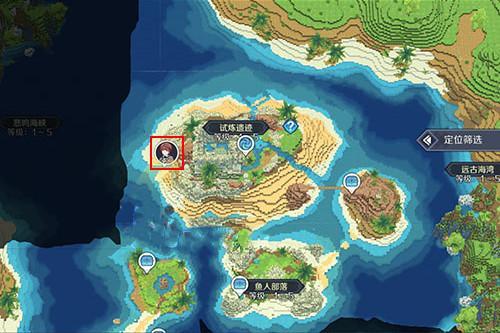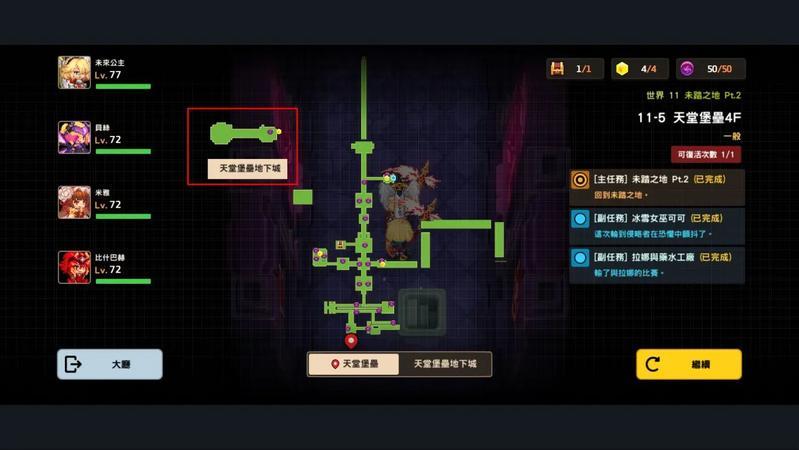opencv图像数据增强笔记
时间:2025-07-23 作者:游乐小编
本文是使用OpenCV实现各类图像增广的笔记,介绍了图片放缩、二值化与阈值处理(含大津法)、翻转(含随机翻转)、去噪声、腐蚀膨胀、旋转、亮度调节、随机裁剪等14种图像增广方法,每种方法均给出了相应的实现代码及效果展示。

opencv实现各类图像增广笔记
图像增广方法有很多,此项目做了如下几个例子的展示(后续再有所其它应用会更新,如果各位有其它需求欢迎评论区催更)
图片放缩图片二值化,阈值处理(大津法求最优阀值)图片翻转图片去噪声图片的腐蚀膨胀图片旋转图片亮度调节图片随机裁剪图片随机添加蒙版图片边缘填充修改图片饱和度图片放大、平移x轴的剪切变换,角度15°
定义函数类结构如下:
class FunctionClass: def __init__(self, parameter): self.parameter=parameter def __call__(self, img):登录后复制
1 图片展示
In [ ]# 导入相关包import cv2import numpy as npfrom matplotlib import pyplot as plt%matplotlib inline登录后复制In [ ]
filename = 'lena.jpg'img = cv2.imread(filename)img = cv2.cvtColor(img, cv2.COLOR_BGR2RGB)print(img.shape) # 输出通道数,大小是350*350 3通道plt.imshow(img)登录后复制
(350, 350, 3)登录后复制
登录后复制
登录后复制登录后复制登录后复制登录后复制登录后复制登录后复制登录后复制登录后复制登录后复制登录后复制登录后复制登录后复制
2 图片放缩
In [ ]class Resize: def __init__(self, size): self.size=size def __call__(self, img): return cv2.resize(img, self.size)# Resize( (600, 600))通过修改函数中参数进行调节图片的大小resize=Resize( (600, 600))img_resize=resize(img)plt.imshow(img_resize)登录后复制
登录后复制
登录后复制登录后复制登录后复制登录后复制登录后复制登录后复制登录后复制登录后复制登录后复制登录后复制登录后复制登录后复制
3 图片二值化,阈值处理(大津法求最优阀值)
In [ ]#载入原图img_original=cv2.imread('lena.jpg',0)#迭代阈值分割print("请输入阈值0-255")thresh = int(input())retval,img_global=cv2.threshold(img_original,thresh,255,cv2.THRESH_BINARY)print(retval) #最优阈值ret2,th2 = cv2.threshold(img_original,0,255,cv2.THRESH_OTSU)print(ret2)#显示图片plt.subplot(1,3,1)plt.imshow(img_original,'gray')plt.title('Original Image')plt.subplot(1,3,2)plt.hist(img_original.ravel(),256)#.ravel方法将矩阵转化为一维plt.subplot(1,3,3)plt.imshow(th2,'gray')plt.title('Otsu thresholding')plt.show()登录后复制请输入阈值0-255登录后复制
111.0116.0登录后复制
登录后复制登录后复制
4 图片翻转
4.1 水平、垂直翻转
In [ ]class Flip: def __init__(self, mode): self.mode=mode def __call__(self, img): return cv2.flip(img, self.mode)# 指定翻转类型(非随机)# mode=0垂直翻转、1水平翻转、-1水平加垂直翻转flip=Flip(mode=0)img_flip=flip(img)plt.imshow(img_flip)登录后复制
登录后复制
登录后复制登录后复制登录后复制登录后复制登录后复制登录后复制登录后复制登录后复制登录后复制登录后复制登录后复制登录后复制
4.2 随机水平、垂直翻转
In [ ]import random# 随机翻转class RandomFlip((object)): def __init__(self, mode=1): # 设置一个翻转参数,1、0或-1,默认1 assert mode in [-1, 0, 1], "mode should be a value in [-1, 0, 1]" self.mode = mode def __call__(self, img): # 随机生成0或1(即是否翻转) if random.randint(0, 1) == 1: return cv2.flip(img, self.mode) else: return img登录后复制In [ ]
randomflip=RandomFlip(0)img_randomflip=randomflip(img)plt.imshow(img_randomflip)登录后复制
登录后复制
登录后复制登录后复制登录后复制登录后复制登录后复制登录后复制登录后复制登录后复制登录后复制登录后复制登录后复制登录后复制
5 图片去噪声
In [ ]def gasuss_noise(image, mean=0, var=0.001): # 模拟高斯噪声 ''' 添加高斯噪声 mean : 均值 var : 方差 ''' image = np.array(image/255, dtype=float) noise = np.random.normal(mean, var ** 0.5, image.shape) out = image + noise if out.min() < 0: low_clip = -1. else: low_clip = 0. out = np.clip(out, low_clip, 1.0) out = np.uint8(out*255) return out登录后复制In [ ]
img_noise = gasuss_noise(img) # 添加噪声dst = cv2.fastNlMeansDenoisingColored(img,None,10,10,7,21) # 去噪函数plt.subplot(121),plt.imshow(img_noise) # 含噪声(绿点)图plt.subplot(122),plt.imshow(dst) # 去噪后的图plt.show()登录后复制
登录后复制
6 图片的腐蚀膨胀
In [ ]kernel = np.ones((3, 3), dtype=np.uint8) # 定义3x3卷积核dilate = cv2.dilate(img, kernel, 1) # 1:迭代次数,也就是执行几次膨胀操作erosion = cv2.erode(img, kernel, 1) plt.subplot(131),plt.imshow(img)plt.subplot(132),plt.imshow(dilate) # 膨胀plt.subplot(133),plt.imshow(erosion) # 腐蚀plt.show()登录后复制
登录后复制登录后复制
7 图片旋转
In [ ]class Rotate: def __init__(self, degree,size): self.degree=degree self.size=size def __call__(self, img): h, w = img.shape[:2] center = (w // 2, h // 2) # 采取中心点为轴进行旋转 M = cv2.getRotationMatrix2D(center,self.degree, self.size) return cv2.warpAffine(img, M, (w, h))# 参数1是旋转角度,参数2是图像比例rotate=Rotate(45, 0.7)img_rotating=rotate(img)plt.imshow(img_rotating)登录后复制
登录后复制
登录后复制登录后复制登录后复制登录后复制登录后复制登录后复制登录后复制登录后复制登录后复制登录后复制登录后复制登录后复制
8 图片亮度调节
In [ ]class Brightness: def __init__(self,brightness_factor): self.brightness_factor=brightness_factor def __call__(self, img): img_hsv = cv2.cvtColor(img, cv2.COLOR_BGR2HSV) # 通过cv2.cvtColor把图像从BGR转换到HSV darker_hsv = img_hsv.copy() darker_hsv[:, :, 2] = self.brightness_factor * darker_hsv[:, :, 2] return cv2.cvtColor(darker_hsv, cv2.COLOR_HSV2BGR) brightness=Brightness(0.6)img2=brightness(img)plt.imshow(img2)登录后复制
登录后复制
登录后复制登录后复制登录后复制登录后复制登录后复制登录后复制登录后复制登录后复制登录后复制登录后复制登录后复制登录后复制
9 图片随机裁剪
In [ ]import randomimport mathclass RandCropImage(object): """ random crop image """ """ 随机裁剪图片 """ def __init__(self, size, scale=None, ratio=None, interpolation=-1): self.interpolation = interpolation if interpolation >= 0 else None if type(size) is int: self.size = (size, size) # (h, w) else: self.size = size self.scale = [0.08, 1.0] if scale is None else scale self.ratio = [3. / 4., 4. / 3.] if ratio is None else ratio def __call__(self, img): size = self.size scale = self.scale ratio = self.ratio aspect_ratio = math.sqrt(random.uniform(*ratio)) w = 1. * aspect_ratio h = 1. / aspect_ratio img_h, img_w = img.shape[:2] bound = min((float(img_w) / img_h) / (w**2), (float(img_h) / img_w) / (h**2)) scale_max = min(scale[1], bound) scale_min = min(scale[0], bound) target_area = img_w * img_h * random.uniform(scale_min, scale_max) target_size = math.sqrt(target_area) w = int(target_size * w) h = int(target_size * h) i = random.randint(0, img_w - w) j = random.randint(0, img_h - h) img = img[j:j + h, i:i + w, :] if self.interpolation is None: return cv2.resize(img, size) else: return cv2.resize(img, size, interpolation=self.interpolation)登录后复制In [ ]
crop = RandCropImage(350)plt.imshow(crop(img))登录后复制
登录后复制
登录后复制登录后复制登录后复制登录后复制登录后复制登录后复制登录后复制登录后复制登录后复制登录后复制登录后复制登录后复制
10 图片随机添加蒙版
In [ ]# 随机裁剪图片class RandomErasing(object): def __init__(self, EPSILON=0.5, sl=0.02, sh=0.4, r1=0.3, mean=[0., 0., 0.]): self.EPSILON = EPSILON self.mean = mean self.sl = sl self.sh = sh self.r1 = r1 def __call__(self, img): if random.uniform(0, 1) > self.EPSILON: return img for attempt in range(100): area = img.shape[0] * img.shape[1] target_area = random.uniform(self.sl, self.sh) * area aspect_ratio = random.uniform(self.r1, 1 / self.r1) h = int(round(math.sqrt(target_area * aspect_ratio))) w = int(round(math.sqrt(target_area / aspect_ratio))) #print(w) # 此处插入代码 if w < img.shape[0] and h < img.shape[1]: x1 = random.randint(0, img.shape[1] - h) y1 = random.randint(0, img.shape[0] - w) if img.shape[2] == 3: img[ x1:x1 + h, y1:y1 + w, 0] = self.mean[0] img[ x1:x1 + h, y1:y1 + w, 1] = self.mean[1] img[ x1:x1 + h, y1:y1 + w, 2] = self.mean[2] else: img[x1:x1 + h, y1:y1 + w,0] = self.mean[0] return img return imgerase = RandomErasing()img2=erase(img)plt.imshow(img2)登录后复制
登录后复制
登录后复制登录后复制登录后复制登录后复制登录后复制登录后复制登录后复制登录后复制登录后复制登录后复制登录后复制登录后复制
11 图片边缘填充
In [ ]# 图片边缘填充class Pooling: def __init__(self,pooling1,pooling2,pooling3,pooling4): self.pooling1=pooling1 self.pooling2=pooling2 self.pooling3=pooling3 self.pooling4=pooling4 def __call__(self, img): # 全0填充,若填充其它颜色,需修改下面value中数值即可 img_pool = cv2.copyMakeBorder(img, self.pooling1, self.pooling2, self.pooling3, self.pooling4, cv2.BORDER_CONSTANT, value=(0, 0, 0)) return img_pool # Pooling()中的4个参数分别是,上下左右填充的像素大小pooling=Pooling(10,20,30,40)img2=pooling(img)plt.imshow(img2)登录后复制
登录后复制
登录后复制登录后复制登录后复制登录后复制登录后复制登录后复制登录后复制登录后复制登录后复制登录后复制登录后复制登录后复制
12 修改图片饱和度
In [ ]# 修改图片饱和度class Saturation: def __init__(self,saturation_factor): self.saturation_factor=saturation_factor def __call__(self, img): img_hsv = cv2.cvtColor(img, cv2.COLOR_BGR2HSV) # 通过cv2.cvtColor把图像从BGR转换到HSV colorless_hsv = img_hsv.copy() colorless_hsv[:, :, 1] = self.saturation_factor * colorless_hsv[:, :, 1] return cv2.cvtColor(colorless_hsv, cv2.COLOR_HSV2BGR) saturation=Saturation(0.6)img2=saturation(img)plt.imshow(img2)登录后复制
登录后复制
登录后复制登录后复制登录后复制登录后复制登录后复制登录后复制登录后复制登录后复制登录后复制登录后复制登录后复制登录后复制
13 图片放大、平移
In [ ]# 放大+平移class AmplificationTranslation: def __init__(self,mode1,mode2,mode3): self.mode1=mode1 self.mode2=mode2 self.mode3=mode3 def __call__(self, img): M_crop = np.array([ [self.mode1, 0, self.mode2], [0, self.mode1, self.mode3] ], dtype=np.float32) img = cv2.warpAffine(img, M_crop, (img.shape[0], img.shape[1])) return img# 将彩色图的BGR通道顺序转成RGBimg = cv2.cvtColor(img, cv2.COLOR_BGR2RGB) # AmplificationTranslation()中,参数分别是:放大倍数、平移坐标(-150,-240)ATion=AmplificationTranslation(1.6,-150,-240)img2=ATion(img)plt.imshow(img2)登录后复制
登录后复制
登录后复制登录后复制登录后复制登录后复制登录后复制登录后复制登录后复制登录后复制登录后复制登录后复制登录后复制登录后复制
14 x轴的剪切变换,角度15°
In [ ]class ShearAngle: def __init__(self,mode): self.mode=mode def __call__(self, img): # x轴的剪切变换,角度15° theta = self.mode * np.pi / 180 M_shear = np.array([ [1, np.tan(theta), 0], [0, 1, 0] ], dtype=np.float32) img_sheared = cv2.warpAffine(img, M_shear, (img.shape[0], img.shape[1])) return img_sheared# 将彩色图的BGR通道顺序转成RGBimg = cv2.cvtColor(img, cv2.COLOR_BGR2RGB) # ShearAngle()中,参数是:角度SAion=ShearAngle(15)img2=SAion(img)plt.imshow(img2)登录后复制
登录后复制
登录后复制登录后复制登录后复制登录后复制登录后复制登录后复制登录后复制登录后复制登录后复制登录后复制登录后复制登录后复制

- 末日生还者Under AI
- 221.57 MB 时间:04.23
小编推荐:
相关攻略
更多 热门推荐
更多 热门文章
更多 -

- 神角技巧试炼岛高级宝箱在什么位置
-
2021-11-05 11:52
手游攻略
-

- 王者荣耀音乐扭蛋机活动内容奖励详解
-
2021-11-19 18:38
手游攻略
-

- 坎公骑冠剑11
-
2021-10-31 23:18
手游攻略
-

- 原神卡肉是什么意思
-
2022-06-03 14:46
游戏资讯
-

- 《臭作》之100%全完整攻略
-
2025-06-28 12:37
单机攻略
























